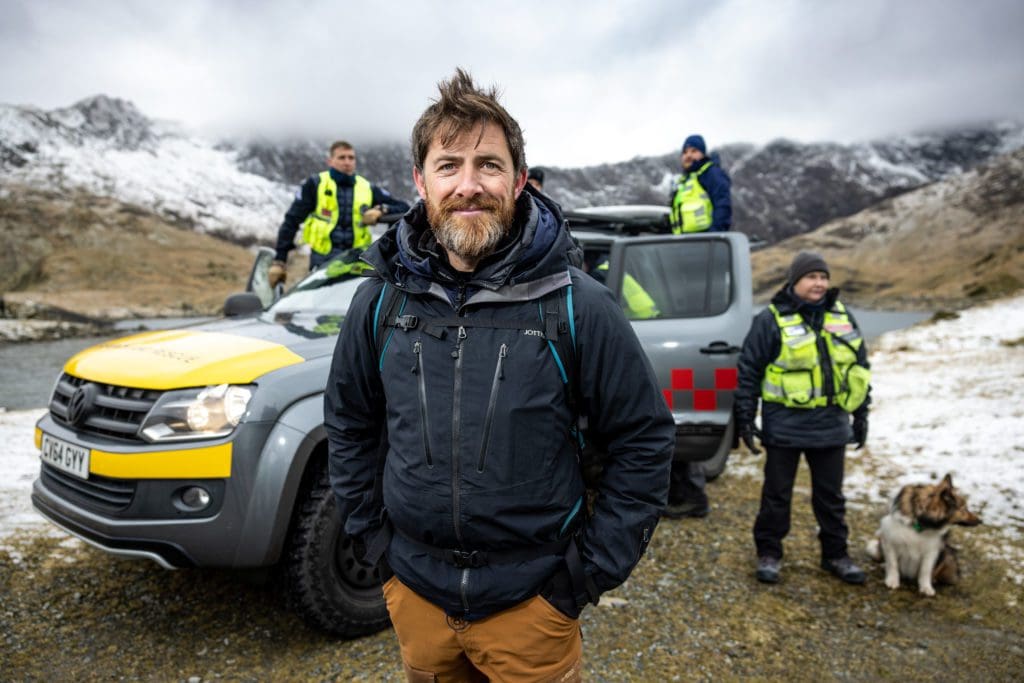International search and rescue operators joined extreme adventurer and seasoned mountaineer, Aldo Kane, on Mount Snowdon (Yr Wyddfa) this weekend to reveal a new way of receiving internet from space – which will transform the way first responder teams operate in the most remote and severe environments to help save thousands of lives.
The flat, lightweight comms base, which connects to OneWeb’s network of satellites in low-Earth-orbit (LEO), has been developed for use across first responder services. Where network signal is disabled, unsecure or non-existent, the terminal will connect ground teams in search and rescue missions with robust and stable communications.
Each year, search and rescue teams get thousands of calls reporting people who have got into trouble in remote areas of the UK. It is estimated that over 3,000 rescues take place on mountains, in remote countryside and along the British coast and this new technology could now provide vital connectivity for first responders in the nation’s most remote and unconnected places – enabling them to operate more efficiently when time is of the essence.

To provide proof-of-concept, TV adventurer Aldo Kane joined international search and rescue team Serve On to scale the summit of England and Wales’s highest mountain peak, Snowdon – considered one of the UK’s most remote and unconnected locations.
At one of the popular routes to the summit of Mt Snowdon, where there was no connectivity, he talked live via Instagram to over 150,000 social media fans via space-powered internet, 3,560-ft above sea level, to showcase the seamless connection.
Speaking from Snowdon, Aldo said: “In dark spots like Snowdonia where connectivity is at best patchy, comms going down is a huge risk – it’s a dangerous time and teams need to be in constant contact. The fact that I can connect this easily with full video capabilities via Instagram on my phone from Mt Snowdon, is testament to the robust connectivity of the OneWeb network – imagine the security felt by rescue teams having this kit on an actual rescue.
“When you embark on a mission the teams’ safety comes first. We’ve got to get in and out alive, avoiding high risk hazards like avalanches, flash flooding or sudden rock falls. It’s my job to stand back and asses that risk and then communicate to the other teams in our operation, wherever they are. Reliable and seamless connectivity like this – at any location, no matter how remote, keeps people alive – not just those being rescued, but also folks doing the rescuing.”
Search and rescue teams operating in natural disaster areas when connectivity is paramount or disabled, have been widely anticipating the launch of this form of high-speed connectivity that enables video and many other apps, no matter where you are.
Dan Cooke of international search and rescue team, Serve On, added: “When we are on the job, we use what we can to get the job done, but operating in the world’s most austere regions often means communications blackouts, which can be extremely dangerous. In those high-risk locations, comms and water are the things that keep you alive. This moveable connectivity technology is a game-changer.
“If we’d had this terminal while in Turkey the last few months, the difference would have been a game changer for us. From humanitarian comms hubs, networked hospitals and mobile aid units to the welfare of locals and rescue teams being able to call loved ones when other comms are disabled. Connectivity is life.”
The moveable connectivity terminal, named the Kymeta Hawk u8-OneWeb LEO, is an electronically steered antenna and mounts easily on the ground as well as to vehicles and vessels to provide seamless satellite or hybrid satellite/cellular link ups. It is powered via a low power outlet – plugged easily into a vehicle’s auxiliary power socket.
Speaking about the launch, Carole Plessy, VP of Europe at British low Earth orbit (LEO) satellite communications company, OneWeb, said: “This terminal has been widely anticipated by our partners and end users, so it’s great to see it finally being put to the test. It will have many real-world applications across first responders operating in remote areas like Snowdonia National Park, the Scottish Highlands, and remote coastal areas as well as by blue light services.
“OneWeb believes that connection everywhere changes everything and this proof-of-concept in the heart of Snowdonia demonstrates how the satellite industry can accelerate new applications to connect industries on Earth to capacity in space. This launch heralds the first of many by OneWeb in its mission to connect the unconnected.”
